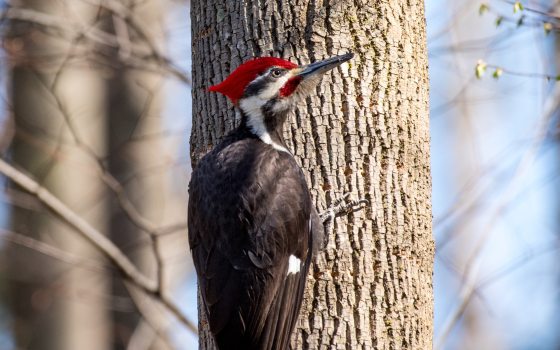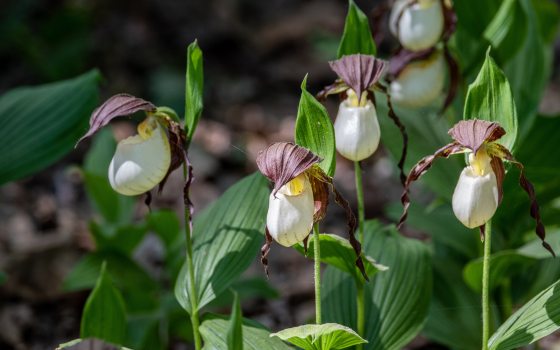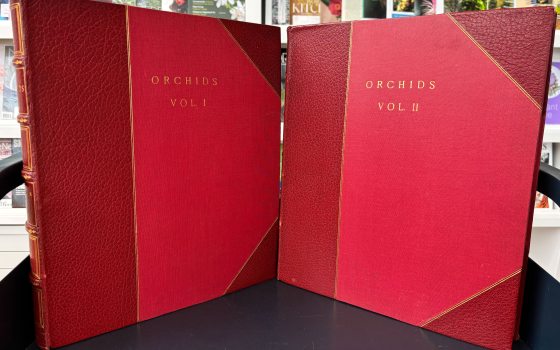In March, our staff found a pair of Pileated Woodpeckers excavating a nest cavity in a large dead tree. We were lucky enough to capture the event on film and have been watching (and filming) their nesting habits ever since. The Pileated Woodpecker relies on the presence of large dead trees, or snags, in the woods for their nesting, feeding and roosting sites. At Longwood Gardens, we retain these dead snags as a part of our sustainable woodland management strategy--striving for 5-10 snags per acre of woods. Not only are these dead trees important to the Pileated Woodpecker, but their yearly abandoned nests function as important future habitat for other forest species like flying squirrels, wood ducks, and other insects, birds and animals. Once these large dead trees fall to the ground, they continue to provide habitat for many other species, such as insects, toads, and salamanders. The downed, decaying wood is the future soil of the forest. Without this decaying woody matter, many of the nutrients and fungal components of the forest floor would not develop sufficiently to maintain healthy forest conditions. A healthy forest is a system of finely tuned relationships between the soil, plants and animals. The successful nesting of the woodpeckers is an annual reminder of one such functioning relationship. Music by General Fuzz.

Pileated Woodpecker Nesting at Longwood Gardens
By Tom Brightman, on
Related Articles
-
The Illegal Plant Trade: What Plant Lovers Need to Know

The Illegal Plant Trade: What Plant Lovers Need to Know
Longwood Gardens has joined the newly launched Illegal Plant Trade Coalition, a global alliance led by Botanic Gardens Conservation International, which unites gardens, scientists, conservation organizations, and enforcement agencies to reduce demand, support legal trade, and protect threatened plants.
By Kate Santos, Jessica Turner-Skoff, and Katie Testa, on October 15, 2025 -
From Frame to Field: Documenting and Protecting Native Orchids

From Frame to Field: Documenting and Protecting Native Orchids
The Longwood Gardens Library was very fortunate to receive a recent gift reflective of our commitment to the conservation of native orchids: a rare 1931 two-volume set of Orchids of the North Eastern United States photographed from nature and published by American fine arts photographer Edwin Hale Lincoln.
By Gillian Hayward and Peter Zale, Ph.D., on August 6, 2025